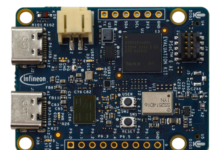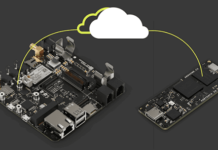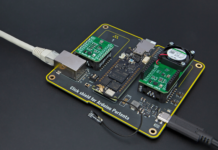
Various system on module standards such as SMARC and Qseven have been adopted by product designers, solution architects and system engineers. SGeT (Standardization Group for Embedded Technologies), an international not-for-profit association of companies and organizations to collaborate and develop independent specifications for embedded computer technology. Choosing an industry standard for system on modules helps in technology scalability and leverage inter-operability amongst suppliers.
Recently, a new standard for system on modules has been defined by SGeT – OSM or Open Standard Module, with the unique value proposition of being a solderable system on module. The standard enables an added layer of ruggedness with the LGA design and surface mount technology.

OSM Standard – Explained
Open Standard Module (OSM), the latest industry standard system on modules was launched in December 2020. To create a new, future proof and versatile standard for small size, low-cost embedded computer modules, SGeT released OSM 1.0 specification. OSM is one of the first standard for directly solderable and scalable embedded computer modules.
OSM is making its way to industry with postage stamp-sized embedded computer modules by replacing credit card-sized modules. The OSM allows developing, producing and distributing embedded modules for the MCU32, ARM and x86 architectures. The key characteristics of OSM module includes:
- Completely machine processible during soldering, assembly and testing
- Pre tinned LGA package for direct soldering without connector
- Pre-defined soft and hard interfaces
- Open-Source in software and hardware
The all-new standard is available in 4 different sizes, ranging across Size Zero, Small, Medium and Large, varying on the LGA Contacts available on the module. The four different form factors can build upon each other.


The open standard module uses a symmetric LGA package for connecting the module PCB to the baseboard PCB. Fused Tin Gird Array, ENIG LGA or BGA, can be used as the contact technologies, at the discretion of the manufacturer. The specifications also allow for module vendors to adopt different heights based on the requirements, with the option to extend through a “PCB Spacer”.
Modules from Size-S upwards offer video interfaces for up to 1x RGB and 4-channel DSI. Size-M modules can additionally support 2x eDP/eDP++, and Size-L adds 2x LVDS interface for graphics. Hence maximum configurations can provide up to 6 video outputs in parallel. All modules from Size-S upwards further offer a 4-channel camera serial interface (CSI). Size-L modules provide up to 10 PCIe lanes for quick connection of peripherals; Size-M offers 2x PCIe x1, and Size-S 1x PCIe x1. In view of the extremely miniaturized footprint, Size-0 modules do not feature any of the I/Os mentioned, but do offer all the interfaces listed in the OSM specification, which provisions up to 5x Ethernet for system-to-system communication.
In all the modules, there is a dedicated communication area, which provides 18 pins for antenna signals for different wireless technologies, and 19 pins available for manufacturer specific signals.
Why one should consider OSM?
The main advantages of the OSM module include PCB solderable module with resistance to vibration, compact form factor with smallest pin to area ratio and provision for technology scalability.
Since the module can be directly soldered on the carrier card, the module is a right fit for products which are prone to vibrations and require a compact form factor. An example includes the connectivity cluster for an electric 2-wheeler. OSM Modules provide designers a solution with an ideal mix of scalability, form-factor and cost.
For a growing number of IoT applications this standard helps to combine the advantages of modular embedded computing with increasing requirements regarding costs, space and interfaces. The potential applications of OSM module include IoT-connected embedded, IoT, and edge systems that run open-source operating systems and are used in harsh industrial environments.
iWave Portfolio of OSM System on Modules
iWave Systems, a leader in design and manufacturing of system on modules, recently launched iW-RainboW-G40M: The solderable i.MX 8M Plus OSM Module. iW-Rainbow-G40M integrates the powerful i.MX 8M Plus processor in the compact OSM 1.0 standard, delivering powerful AI and Machine learning capabilities on a compact module. Two image signal processors (ISP’s) and a dedicated neural network processor at up to 2.3TOPS makes the i.MX 8M Plus an ideal fit in Smart Home, Smart City, Industrial IoT and beyond with its Machine learning, vision, and advanced multimedia capability.
Key Features of the Module
- i.MX 8M Plus Dual/Quad Lite/Quad
- 2GB LPDDR4 (Up to 8GB)
- 16GB eMMC (Up to 64GB)
- Wi-Fi (802.11b/g/n/ac/ax) (ax is optional)
- Bluetooth 5.0
- 2 x CAN-FD Ports
- 2 x RGMII Interfaces
- PCIe 3.0 x 1
- LVDS x 2
- Size-L LGA Module
The module provides designers a flexible and scalable option for their product, while shortening their up time to market. With the provision for industrial interfaces such as CAN-FD, time-sensitive networking, and high-speed interfaces, the processor is an ideal fit for Industry 4.0 and automation systems supporting intelligent and fast processing of multi-media data.
Through a development kit and a production ready SOM, you can accelerate your time to market with reduced risk. The module is application-ready and come with all necessary software drivers and BSPs with software support of Ubuntu, Android and Linux.


















